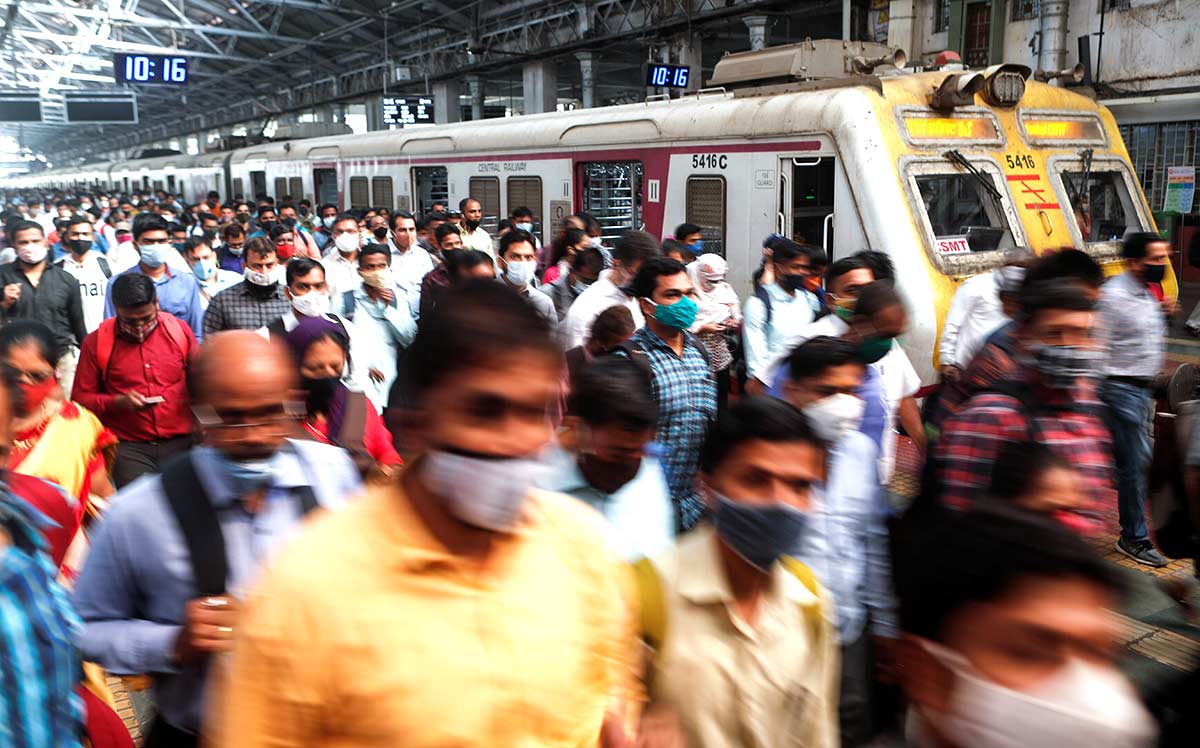India has surpassed China to become the world's most populous nation with 142.86 crore people, shows the latest United Nations data, even as UN projections estimate that the country's population is expected to grow for the next three decades after which it will begin declining.

China now has a population of 142.57 crore, thus being the second most populous country, the UN world population dashboard showed.
Nearly 50 per cent of India's population is below the age of 25 years, according to United Nations Population Fund (UNFPA) India representative Andrea Wojnar.
According to the UNFPA's State of World Population (SWP) Report 2023, about 25 per cent of India's population is in the age group of 0-14 years, 18 per cent in the 10 to 19 age group, 26 per cent in the age bracket of 10 to 24 years, 68 per cent in 15 to 64 years age group, and 7 per cent above 65 years.
Incidentally, the UNFPA's SWP report earlier said that India will surpass China by mid-2023.
The population demographics of India vary from state to state.
Kerala and Punjab have an ageing population while Bihar and Uttar Pradesh have a young population, UN analysis has revealed.
This is the first time that India has topped the UN list of most populous countries since it started collecting population data in 1950.
According to the United Nations' World Population Prospects-2022, India's population was 86.1 crore while China's population was 114.4 crore in 1950.
The report further states that by 2050, India's population is expected to rise to 166.8 crore while China's population would dip to 131.7 crore.
The report also stated that the global population is growing at its slowest rate since 1950, having fallen under one per cent in 2020.
According to the World Population Prospects-2022, India's population last year was 141.2 crore while China's population was 142.6 crore.
The report said the global population was projected to reach eight billion on November 15.
According to the UNFPA, the life expectancy at birth for male in India is 71 while for female it is 74 years.
The contraceptive prevalence rate of women aged 15-49 by any method as of 2023 is 51 per cent.
UN projections estimate that the country's population is expected to grow for the next three decades after which it will begin declining.
According to experts, India has achieved the replacement level of fertility but the population will grow due to momentum phenomenon.
Replacement level fertility is the level of fertility at which a population exactly replaces itself from one generation to the next.
According to the UNFPA, the size of elderly population will nearly double to touch 192 million by 2030, largely in southern and western states.
'By 2050, every fifth Indian will be an elderly person, hence planning for this segment also deserves equal attention. The health and economic security of the elderly will need to gain primacy,' the UNFPA said.
Wojnar, the UNFPA India representative and the country director for Bhutan, said, 'India's 1.4 billion people must be seen as 1.4 billion opportunities.'
Wojnar said population anxieties have seeped into large portions of the general public in India but population numbers should not trigger anxiety or create alarm.
"Instead, they should be seen as a symbol of progress, development, and aspirations if individual rights and choices are being upheld," she said
"As the country with the largest youth cohort -- its 254 million youth (15-24 years) -- can be a source of innovation, new thinking and lasting solutions.
"The trajectory can leapfrog forward if women and girls, in particular, are equipped with equal educational and skill building opportunities, access to technology and digital innovations, and most importantly with information and power to fully exercise their reproductive rights and choices," she said.
Wojnar said that ensuring gender equality, empowerment and advancing greater bodily autonomy for women and girls are the key determinants for a sustainable future.
Individual rights and choices should be respected, and all should be able to decide when to have children, if any, and how many, she said.
Wojnar said global experience has shown that family planning targets can lead to gender-based discrimination and other harmful practices.
"Deleterious effects of such targets include prenatal sex determination leading to sex selective abortion and imbalanced sex ratios, preferential health and nutrition for male children, denial of the paternity of female children, violence against women for giving birth to girl children, and coercion of women to have fewer or greater numbers of children," she said.
"With close to 50 per cent of its population below the age of 25, India has a time-bound opportunity to benefit from the demographic dividend," she added.
"As the national fertility rate falls below 2.1 (the replacement level), India is at a unique historical opportunity, witnessing a great demographic transition as youthful nation, with a notable demographic diversity across states to convert the potential demographic dividend into economic benefits through additional investments in health, education, and quality jobs for young people, including targeted investments in women and girls," Wojnar said.
"India's demographic dividend can be further secured by incorporating the impact of mega trends such as climate change, urbanisation, migration and ageing into policy initiatives," she said.
Poonam Muttreja, Executive Director, Population Foundation of India, said women cannot be the subjects of population targets.
"Whether they wish to have children or not, when to have them, and how many are really their right -- nobody else's. Families, governments, and policy-makers or society have no right to take decisions on their behalf. Women's autonomy over their bodies cannot be determined by policies driven by population trends -- incentivising women to have more children if the population is declining, or controlling their fertility if the population is rising," she said.











 © 2025
© 2025